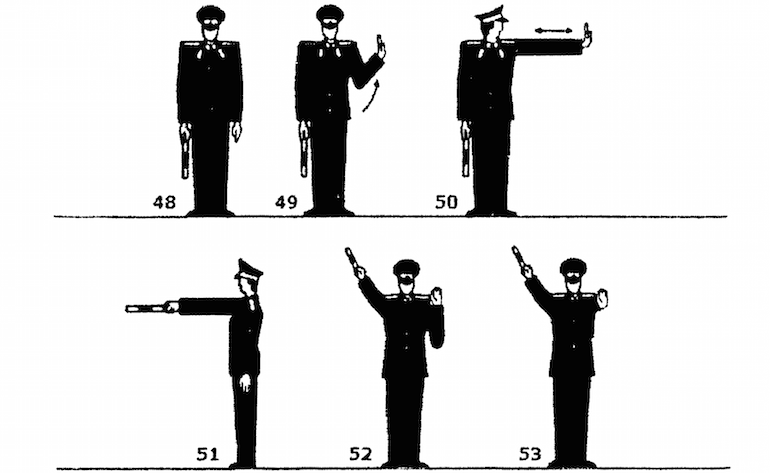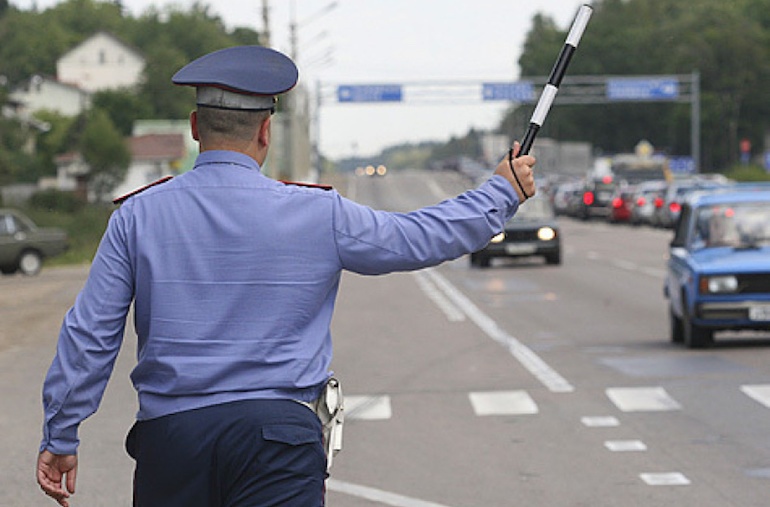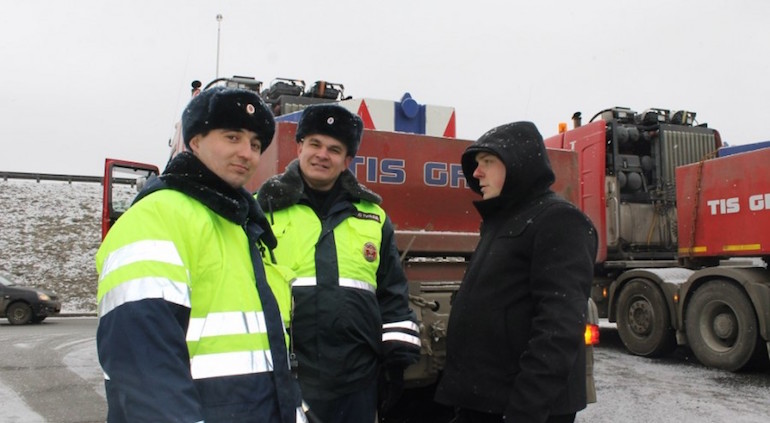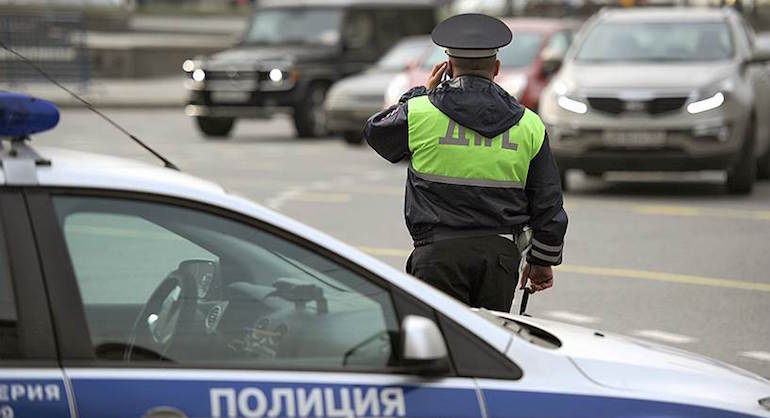
185 traffic police order - read updated 2015-2016
If we take the constitution of any state, then, among others, it will definitely contain an article that says that all citizens are equal before the law.
In the Russian Constitution, this will be the nineteenth article:
- everyone is equal before the law, regardless of race, gender, nationality, language and attitude (or not) to religion.
However, we can often observe both on the example of our country and on the examples of most other countries that this equality is proclaimed exclusively de jure, or only on paper. But in fact, some people before the law are “a little more equal” than everyone else.
This fact can be explained in different ways: social status, money decides everything, connections and acquaintances with the right people, belonging to a higher caste, and so on.
But one more simple explanation can be found - not all people bother to pick up at least the same Constitution and read about their rights. Practice shows that a person who understands the law will always be able to defend his rights in any area: labor disputes, problem loans, bureaucratic lawlessness in the field, and so on.
Drivers not only need to know their rights, but simply vital, since every day they meet with representatives of the law in the person of traffic police inspectors. And in order to know what is allowed for the traffic police and traffic police, and what is prohibited, you need to study such a document as “Order of the Ministry of Internal Affairs No. 185”, which came into force in September 2009. Since then, several changes have been made to it, which did not particularly affect its essence.

What regulates 185 traffic police order?
This order clearly sets out the scope of tasks for traffic police officers. This is a fairly large document, consisting of about 20-22 pages. If we skip all sorts of preambles, references to other normative and legislative acts, articles of the Constitution and explanatory notes written in a clerical language that is incomprehensible to the common man, then we can highlight the main points:
- who has the right to control and regulate traffic;
- who can be considered road users;
- how employees should treat DD participants;
- a list of employees' powers (all procedures are indicated here from adjustment to detention, a ban on driving a vehicle, or even an arrest);
- how traffic police officers are required to look at their posts;
- how they should control traffic;
- what special equipment they can use;
- what could be the reasons for stopping drivers and pedestrians;
- when the driver should get out of his car and when not;
- under what conditions can an inspection, verification of numbers, verification of documents, search be carried out;
- how the inspector is obliged to draw up a resolution-receipt of a fine;
- How to test for alcohol intoxication.
And there are many more questions that really interest every driver in this law. But the most important thing is that all this knowledge can really be used in practice, proving one's innocence or illegality of the actions of a traffic police officer.
In a word, it is simply impossible to consider all aspects of Order 185 in such a short text, therefore the Vodi.su driver portal team strongly recommends its readers to download (at the bottom of the page), print this law, read carefully and remember the most important points.
We will briefly dwell on some points.

How should traffic police officers behave?
Control over compliance with traffic rules is carried out by:
- federal governing body of the traffic police;
- regional departments of traffic police - district, city, regional, regional;
- representatives of the Ministry of Internal Affairs (police) at special facilities or in the area of various operations.
All persons admitted to the performance of such duties, mainly traffic police inspectors, must be in uniform, have a numbered badge on their chest, and a service certificate.
A very important point is that they must address the participants of the DD (traffic) politely, on “You”, present their certificates, clearly explain the reason for the stop (we will consider this issue below), they should not prohibit the use of voice recorders or video recorders. In turn, the inspector can also record the conversation on video or audio.
Documents must be handled with care. If there is money in the document, the inspector is obliged to return it back and ask to transfer the VU without extraneous papers.
In extreme cases, it is allowed to use force - the inspector "is obliged to stop illegal actions on the spot" if there is a clear threat to him or others.
Control can be exercised:
- on a patrol car in motion or in a stationary position;
- on foot;
- at a stationary post.
The use of any other vehicle is prohibited, except for patrol vehicles. Control can be carried out in hidden or open forms, but in full compliance with the requirements of the law.
Then comes a whole list of items that explain what road control is, who are the participants in the DD, and so on.
Photo from the document.

Reasons for stopping DD participants
Paragraphs from 63 to 83 are the most interesting - they explain the reasons for stopping vehicles or pedestrians, and how traffic police officers and road users are required to behave in a given situation.
The reasons for stopping are as follows:
- non-compliance of the vehicle with the operating rules - lighting devices, dirty numbers, overload, breakdowns, and so on;
- violation of traffic rules by a driver or a pedestrian;
- the presence of orientations for the capture and detention of the vehicle on the wanted list;
- conducting various special operations;
- you need to use a car to suppress illegal actions;
- assistance to victims, interviewing witnesses to the accident.
Please note that simply stopping the car and demanding to present documents for it is allowed only at traffic police posts.
If you are stopped, the inspector must indicate the place to stop, immediately come up, explain the reason, and present a certificate.
The driver must leave the vehicle only in the following cases:
- to troubleshoot;
- if there is a smell of alcohol or signs of intoxication;
- to check body numbers and VIN-code;
- to provide assistance to victims or if so required by the performance of legal proceedings.
They can also be forced to leave the car if, in the opinion of the employee, the driver may pose a danger to him personally or to other participants in the traffic accident.
The traffic police officer has the right to ask the driver to change the location of the car if he:
- interferes with other DD participants;
- being on the road is dangerous.
Also, if the case requires it, the driver may be offered to switch to a patrol car.
In the order itself, all these points are described in more detail, and we would advise you to contact the original source directly in order to know how to behave in a particular situation that may arise on the road.
The following are a few points on how employees should behave in the event of non-compliance with their request to stop:
- transfer of information to other posts or to the person on duty;
- start chasing and take measures to force a stop.
A forced stop can be carried out both by patrol forces and by calling reinforcements, up to aviation and special equipment. Roads may be closed. Blocking roads with trucks is allowed to prevent a real danger to others. In addition, if the law provides, then the inspector can also use firearms - in a word, it is better to stop right away than to take the fire upon yourself.
Paragraphs 77-81 are devoted to the topic of stopping a pedestrian if he has violated traffic rules.

Decision-receipt on the issuance of a fine
After two dozen paragraphs devoted to checking documents and reconciling numbers, another important topic is being considered - issuing fines.
The employee has to issue a receipt only if the offender agrees with such a decision and does not deny his guilt. As we remember from the Code of Administrative Offenses, for many violations the exact amount of the fine is not indicated (from 500 to 800 rubles or from 3000 to 4000 rubles), there may also be only a warning for some violations.
The exact amount is prescribed by the inspector himself, taking into account various extenuating circumstances and the property status of the driver.
If a minor who is already 16 years old has violated traffic rules, a fine cannot be issued on the spot, because the prosecutor must be notified of all such administrative violations, so a violation protocol is drawn up and transferred to the appropriate authorities. The same applies to cadets and military servicemen.
The receipt is issued in two copies, in which the employee indicates his data, date, time of violation, amount and all details for paying the fine.
Further, the Order discusses other points, for example, how an interview is conducted or how an examination for intoxication is carried out. There are also points regarding removal from management, so we advise you to download Order 185 below and familiarize yourself with it in full.
Download the full text of Order 185 of the Ministry of Internal Affairs.
This video shows how order 185 is violated.
Loading…
